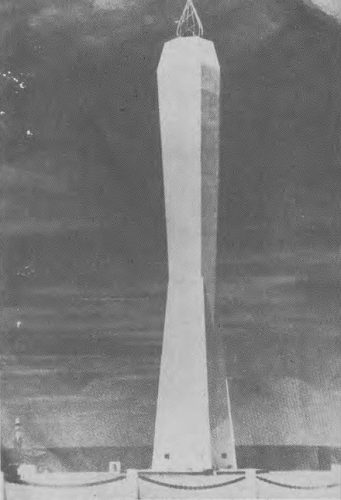- Author
- Downs, Ian G F
- Subjects
- History - general
- Tags
-
- RAN Ships
- None noted.
- Publication
- January 1972 edition of the Naval Historical Review (all rights reserved)

THE ROYAL AUSTRALIAN NAVY established a coast watching organisation prior to the outbreak of war in 1939. It was a voluntary service under which selected persons undertook to report to the Navy all matters of naval interest in their area.
Immediately after the outbreak of war with Germany the organisation was expanded to cover thousands of miles of Australian coast and the mainland and islands of Papua New Guinea. Volunteer observers manned the arc of islands stretching under the equator from west of Manus to the eastern edge of the British Solomon Islands. This 1200 miles screen of early warning was shattered by the impact of the Japanese invasion in January 1942. Most AWA radio stations which had been relaying Coastwatchers’ reports closed. No effective forces on land, sea or in the air existed to take advantage of Coastwatchers’ reports or to even maintain those now marooned in forward positions. Many brave and able men were killed because they rejected opportunities for their own escape while giving help to others. Regrettably some were executed as civilian spies because naval regulations and a tight budget could not be stretched in time to provide protection of uniforms or even badges. Nor were their dependants eligible for pension when these men were killed.
Many of the original Coastwatchers were government officers with conflicting duties, such as the evacuation of the civilian population. Some were able to discharge these responsibilities and still remain or return as Coastwatchers while others understandably joined the regular fighting services. The gaps were filled to meet the main operational requirements and those in the forefront of the battle who had not come from the armed forces were given rank or rating in the Naval Reserve.
Fortunately there were a few who survived the first onslaught and maintained themselves in situations of extraordinary advantage from which they were able to take a direct and decisive part in the war against Japan. By their efforts, these men justified the whole concept of the organisation and what had begun as an irregular unit was expanded and adopted by both South Pacific and South West Pacific Command Headquarters as a vital and regular intelligence force operating by design behind enemy lines.
Early warning systems of intelligence are wasted unless they can be exploited by offence or defence forces capable of taking advantage of them. On December 7th 1941 the Japanese attack on Pearl Harbour crippled the Americans in the Pacific. Japanese sea, air and land power literally swarmed over South East Asia towards the northern and eastern approaches to Australia. In retrospect there is little doubt that if the Japanese had accepted the evidence of the token forces they found at Rabaul as a guide to what they could then expect further south, they would have successfully launched an invasion of Australia long before the United States could have intervened.
In January 1942 Con (Cornelius) Page, the Coastwatcher on Simberi Island in the Tabar group, made the first report of enemy formations heading for Rabaul in New Britain. Over the next two weeks his continued warnings were amplified by reports coming in from Coastwatchers Kyle and Benham in New Ireland. Rabaul’s harbour defence guns were put out of action by Japanese aircraft which a handful of ancient Wirraway fighters were unable to divert. When the invasion came, the defence force of less than a battalion was disrupted by the scale of the attack and did not manage to regroup under its own officers. Remnants making their way south were subsequently gathered together (largely by the efforts of Coastwatchers from South New Britain, organised by J.K. McCarthy) and evacuated with civilians to the mainland. Rabaul became a major base for the Japanese.
A chapter in Commander Eric Feldt’s book “The Coastwatchers” tells the heroic and tragic stories of Page – who survived unarmed, amongst increasingly hostile natives, on a small island in what had become a Japanese sea, for another five months before being betrayed to the enemy – and of Kyle and Benham who also were the victims of informers and executed by the Japanese. These men made their own decisions to remain as Coastwatchers in an organisation that they knew could now do little to help them. They had the frustration of knowing that even their reports could not be exploited by a single allied aircraft. In fact, many months were to go by before Coastwatchers in New Guinea would see even allied reconnaissance flights. They needed great faith as well as fortitude to keep their positions.




